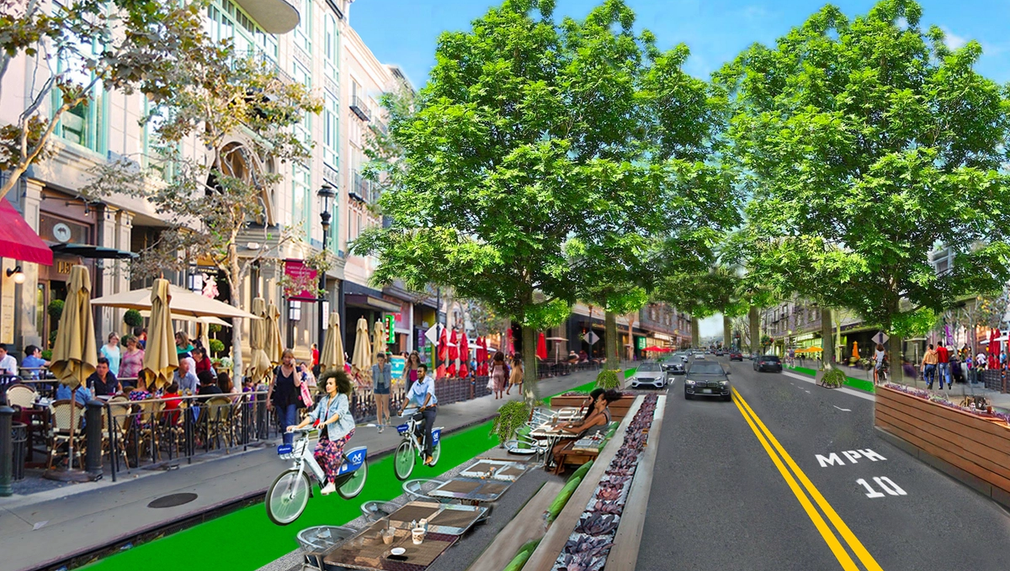New Approach to LA’s Housing Crisis
LA County is facing an epic housing crisis. There are many causes, but the main one is a supply shortage that’s driving up rents—and it’s this shortage we need to remedy. Our solution will greatly increase housing inventory by empowering local builders to build small, affordable units on narrow lots—without parking. The result will be walkable communities where people can enjoy life without cars. The benefits: greater affordability and equity, less congestion and pollution, more mobility options, and better quality of life for all Angelenos.

What is the primary issue area that your application will impact?
Housing and Homelessness
In which areas of Los Angeles will you be directly working?
Central LA
East LA
San Fernando Valley
South LA
West LA
County of Los Angeles
In what stage of innovation is this project, program, or initiative?
Expand existing project, program, or initiative
What is your understanding of the issue that you are seeking to address?
A severe housing-supply shortage across LA County has caused rents to skyrocket, creating hardship for residents and driving thousands to homelessness. Many are forced to live far from where they work, creating long car commutes and congestion, and aggravating our climate crisis. The cause of this supply shortage? Old zoning laws that no longer address our needs—laws that make it difficult and expensive to build housing in LA. Red tape and city rules eat up much of a project’s budget, and neighbors often fight projects, driving up costs. One of the biggest cost drivers: rigid parking minimums—despite the fact that many Angelenos don’t drive. And there are others—like heavy carrying costs (because projects take so long to get approved and complete) and frivolous lawsuits (which our zoning laws invite). These expenses drive up the cost to build homes, so that few projects pencil out. The result: only big developers can afford to build—and they only want to do big, expensive projects.
Describe the project, program, or initiative this grant will support to address the issue.
The LCI is a grassroots advocacy campaign. The goal: persuade elected officials across LA County to rezone our cities to enable 1) increased housing supply, 2) greater housing density, 3) more affordable living, and 4) easier, greener mobility. The proposed rezoning will transform commercial corridors into safe, livable, sustainable communities. These new neighborhoods will have warm, human-scale architecture reflecting community-approved designs. The LCI plan is an innovative solution that will: *Create new urban living experiences: mixed-use buildings (up to 5 stories) on walkable, bikeable streets. *Remove parking minimums, enabling small buildings on narrow lots. *Establish “by right” development code to speed approvals & end lawsuits. *Reduce onerous fees & add guardrails to protect small builders. *Have pre-approved plans chosen by the community. By removing excess fees, red tape, delays, and risk, this will democratize building and break up our big-developer monopoly. It will empower and incentivize local builders to make small buildings with affordable units on narrow lots. Unlike other attempts to address the housing crisis, it’s a market-driven approach—but with small businesses leading the way. To persuade officials to enact this rezoning, we’ll: *Build consensus among residents via grassroots outreach. *Engage technical experts to evolve our solution. *Develop literature to educate stakeholders. *Engage in deep dialogue with elected officials in LA County.
Describe how Los Angeles County will be different if your work is successful.
Imagine living in an exciting, buzzing neighborhood—one with inviting, human-scale buildings, charming residential units perched above locally-owned businesses, wide sidewalks, and safe bike lanes—all under lush tree canopies. Imagine not needing a car because everything’s right there: *Outdoor dining *Markets *Your friends *Your work *Fast transit Imagine this community being affordable for ordinary working folks. If we can persuade officials to implement the LCI plan, it'll transform LA County’s underused commercial corridors to vibrant new communities. The benefits: *Greater affordability & reduced homelessness—due to more supply. *Better quality of life—with complete, walkable neighborhoods. *Greater equity—by reversing displacement & increasing affordability. *More mobility options—walking, biking, transit, & more. *Reduced climate impact—because car-free living is the best thing we can do to save our planet. *Less traffic—because people can live near their jobs (or transit).
What evidence do you have that this project, program, or initiative is or will be successful, and how will you define and measure success?
LCI’s goal is simple: Convince elected officials in cities across LA County to implement the LCI plan. In 2022, we’ve 1) assessed LA County’s housing crisis, 2) worked with our team to develop a detailed solution (documented in our White Paper), 3) begun discussions with community leaders and elected officials in multiple cities, and 4) gotten the LCI plan written into LA’s Housing Element, the City’s blueprint for creating new housing. Moving forward, we’ll measure success by how many cities implement this new vision. LA County is huge, so we need to prioritize our efforts. Our focus for the grant period: *Los Angeles *Culver City *Santa Monica *West Hollywood *Inglewood In these cities, we’ll conduct the activities described in Q8—simultaneously building grassroots, community-level support while dialoguing with—and patiently persuading—local elected officials. We’ll judge the campaign successful if at least one city in LA County rezones to reflect the LCI vision by October 2023.
Approximately how many people will be impacted by this project, program, or initiative?
Direct Impact: 1,000,000
Indirect Impact: 5,000,000